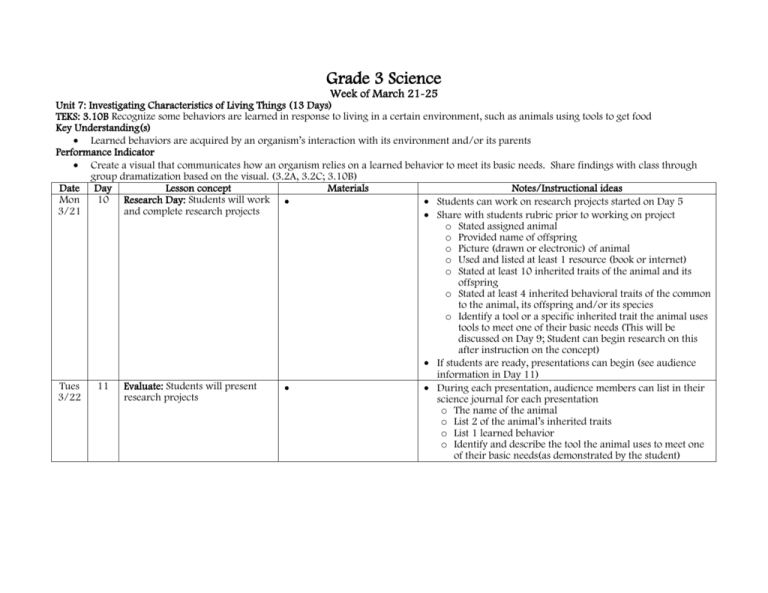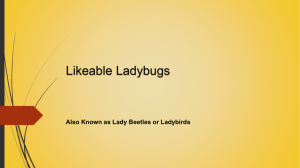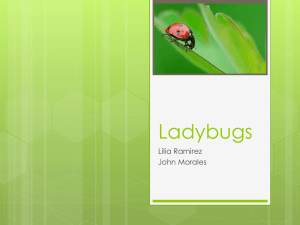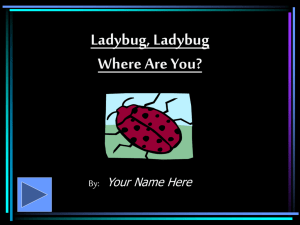SO NOTED GR 3 Science Mar 21
advertisement

Grade 3 Science Week of March 21-25 Unit 7: Investigating Characteristics of Living Things (13 Days) TEKS: 3.10B Recognize some behaviors are learned in response to living in a certain environment, such as animals using tools to get food Key Understanding(s) Learned behaviors are acquired by an organism’s interaction with its environment and/or its parents Performance Indicator Create a visual that communicates how an organism relies on a learned behavior to meet its basic needs. Share findings with class through group dramatization based on the visual. (3.2A, 3.2C; 3.10B) Date Day Lesson concept Materials Notes/Instructional ideas Mon 10 Research Day: Students will work Students can work on research projects started on Day 5 3/21 and complete research projects Share with students rubric prior to working on project o Stated assigned animal o Provided name of offspring o Picture (drawn or electronic) of animal o Used and listed at least 1 resource (book or internet) o Stated at least 10 inherited traits of the animal and its offspring o Stated at least 4 inherited behavioral traits of the common to the animal, its offspring and/or its species o Identify a tool or a specific inherited trait the animal uses tools to meet one of their basic needs (This will be discussed on Day 9; Student can begin research on this after instruction on the concept) If students are ready, presentations can begin (see audience information in Day 11) Tues 11 Evaluate: Students will present During each presentation, audience members can list in their 3/22 research projects science journal for each presentation o The name of the animal o List 2 of the animal’s inherited traits o List 1 learned behavior o Identify and describe the tool the animal uses to meet one of their basic needs(as demonstrated by the student) Grade 3 Science Week of March 21-25 TEKS 3.10C Investigate and compare how animals and plants undergo a series of orderly changes in their diverse life cycles such as tomato plants, frogs, and lady bugs. Key Understanding(s) All plants and animals go through a life cycle. An organism’s life cycle is predictable and describable, but differs from species to species. Performance Indicator Illustrate and identify each stage in the life cycle of a researched organism. Compare and contrast it with the life cycle of an organism being studied in class. (3.2A; 3.2C; 3.10C) Date Day Lesson concept Materials Notes/Instructional ideas Wed 12 Engage, Explore (Unit 6, lesson 2 A book related to the topic Engage 3/23 p. 3-4): Does offspring represent of mismatched offspring A book that depicts a tale of a misplaced, mismatched their parents in the beginning; and parent offspring and parent that eventually find out the truth about Observe and record the offspring's (See list in CScope) Chart tablet and markers characteristics of mystery animal Discussion of what types of things all animals need to survive Stages in the Life Cycles of and reproduce a Butterfly colored Ladybugs – we are requesting for handout Discussion of habitat; Place on word wall and in glossary in it to be delivered on March 21st science journal Tape and get them out to teachers that Explore Monday or Tuesday; Ordering the Ladybug larvae in clear Replace all references to mealworms with larvae. cup whole habitat with the larva Students are not to know that the mystery animal is a ladybug Hand lens (will not discuss until tomorrow) Paper plate Since these larvae will crawl out of a cup rather quickly, Plastic spoon either provide a lid for the cup, or place the organisms in Pipe cleaners magnification boxes/jars. Otherwise, follow the basic Straws procedures listed with any necessary modifications. 1 dropper of water Step 1: Have students compare and contrast the mystery optional organism with the butterfly caterpillar. Step 2: You might show a photo of the eggs from which the mystery larvae developed. Steps 3 & 4: These larvae are not as easily studied as mealworms. Adjust the procedures as needed. Step 5: Move on to the Explain so that the larvae can be immediately placed in their habitat. Grade 3 Science Week of March 21-25 Date Thurs 3/24 Day 13 Lesson concept Explain, Elaborate (Unit 6, lesson 2 p. 5): View animal and create appropriate habitat Materials Materials for ladybug habitat All About Ladybugs handout Notes/Instructional ideas Explain Be sure any labels with “Ladybug” have been deleted or covered up. Use the instructions that came with your larvae to discuss with students how to set up and maintain a habitat to meet the organism’s needs. Elaborate Replace all references to mealworms and darkling beetles with “larvae” and “lady beetles” or “ladybugs.” Once students realize that the larva is a ladybug, teacher can share All About Ladybugs handout for reading and class discussion Students will need a page in their science journal to document and collect data and pictures on the ladybug as they progress. This can take several weeks and need to be brought into the science lessons as a warm-up until the life cycle is complete Performance Indicator listed will be administered after students observe the life cycle of butterfly Fri 3/25 Teacher Day – Early Release Need to have a conversation with teachers about what to do with the ladybugs is they decide to get rid of them; Have teachers follow the directions provided with the packaging.











